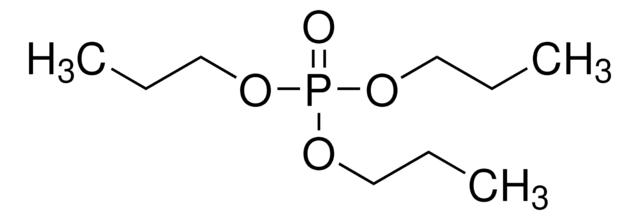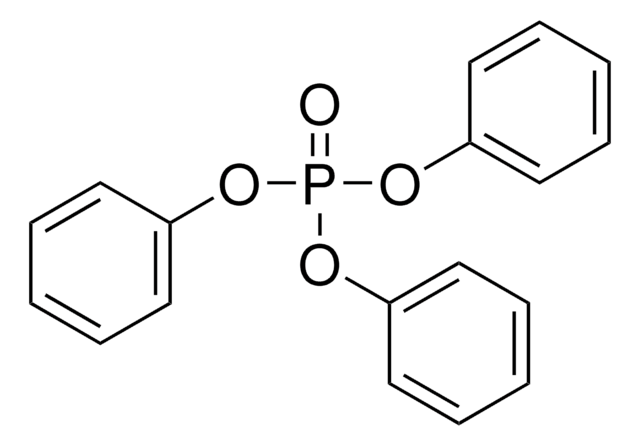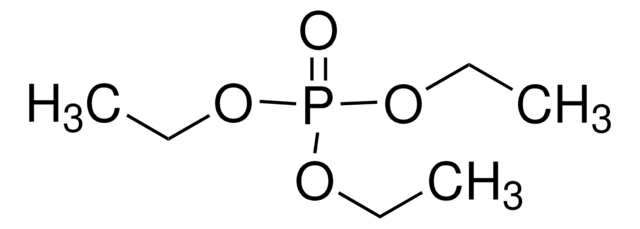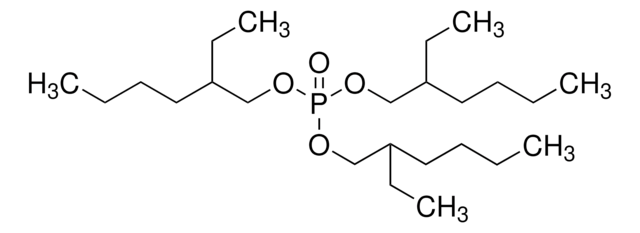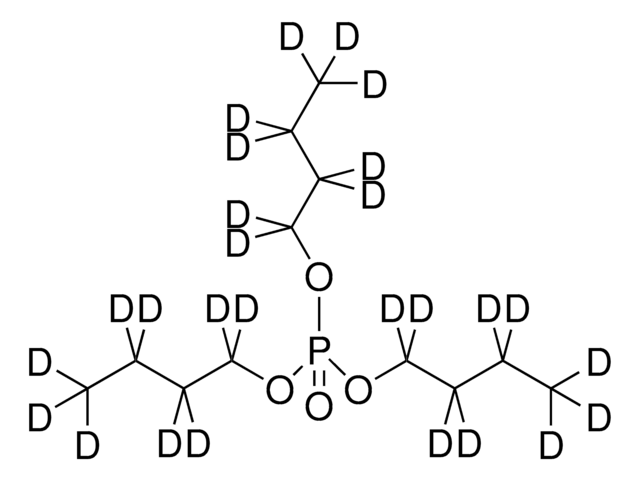240494
Tributilfosfato
≥99%
Sinonimo/i:
TBP, TBPA
About This Item
Prodotti consigliati
Densità del vapore
9.2 (vs air)
Livello qualitativo
Tensione di vapore
27 mmHg ( 178 °C)
7.3 mmHg ( 150 °C)
Saggio
≥99%
Stato
liquid
Temp. autoaccensione
770 °F
Indice di rifrazione
n20/D 1.424 (lit.)
P. ebollizione
180-183 °C/22 mmHg (lit.)
Punto di fusione
−79 °C (lit.)
Solubilità
organic solvents: miscible
water: soluble (1mL in 165mL)
Densità
0.979 g/mL at 25 °C (lit.)
Gruppo funzionale
phosphate
Stringa SMILE
CCCCOP(=O)(OCCCC)OCCCC
InChI
1S/C12H27O4P/c1-4-7-10-14-17(13,15-11-8-5-2)16-12-9-6-3/h4-12H2,1-3H3
STCOOQWBFONSKY-UHFFFAOYSA-N
Cerchi prodotti simili? Visita Guida al confronto tra prodotti
Descrizione generale
Tributyl phosphate (TBP) is an organophosphate compound widely used as an extraction solvent, flame retardant, and plasticizer.
Applicazioni
Avvertenze
Warning
Indicazioni di pericolo
Consigli di prudenza
Classi di pericolo
Acute Tox. 4 Oral - Aquatic Chronic 3 - Carc. 2 - Skin Irrit. 2
Codice della classe di stoccaggio
10 - Combustible liquids
Classe di pericolosità dell'acqua (WGK)
WGK 2
Punto d’infiammabilità (°F)
293.0 °F - closed cup
Punto d’infiammabilità (°C)
145 °C - closed cup
Dispositivi di protezione individuale
Eyeshields, Faceshields, Gloves, type ABEK (EN14387) respirator filter
Scegli una delle versioni più recenti:
Possiedi già questo prodotto?
I documenti relativi ai prodotti acquistati recentemente sono disponibili nell’Archivio dei documenti.
I clienti hanno visto anche
Il team dei nostri ricercatori vanta grande esperienza in tutte le aree della ricerca quali Life Science, scienza dei materiali, sintesi chimica, cromatografia, discipline analitiche, ecc..
Contatta l'Assistenza Tecnica.




